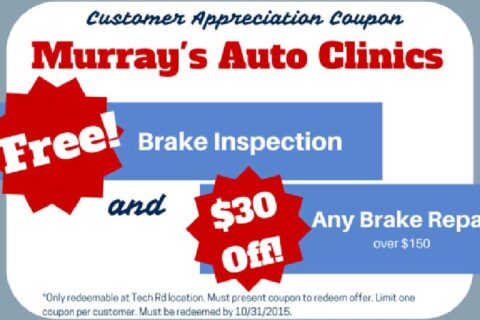Identifying the Most Common Signs of Brake Failure
Although the braking system is one of the most important safety features on modern cars, it is also one of the most overlooked. In other words, the braking system goes unnoticed until a problem pops up—which is usually too late. To keep your car as safe as possible, learn to identify the most common signs of brake failure, their causes, and when to visit an auto repair shop to have your brakes replaced or repaired.

Unusual Noises Coming From the Brakes
Squealing and grinding is one of the most telling signs of brake failure, and is usually an indication of worn or glazed brake pads. When built-in wear indicators come into contact with the brake rotor, they emit a squealing noise to warn you that it’s time to have your brake pads replaced.
Pulsating Brake Pedal
Another sign of brake failure is a pulsating brake pedal. Heat and wear cause this condition by wearing out and warping the brake rotor or drum. In order to fix the pulsating brake pedal, your brake repair shop will need to re-match or replace the worn-out rotor or drum.
Soft, Spongy Brake Pedal
If you can depress the brake pedal all the way to the floor until your vehicle starts to slow, you need to visit a brake repair shop as soon as possible. A soft brake pedal is usually a result of brake fluid leakage due to failure of a brake house or rusted metal brake line, a worn wheel cylinder or brake caliper, or a worn master cylinder.
If your brakes need to be adjusted, repaired, or replaced, bring your vehicle to Murray’s Auto Clinic. We specialize in major and minor automotive repair services, including brake repair. If you have questions about our brake inspection and repair services, please call us at 301-585-7557.


